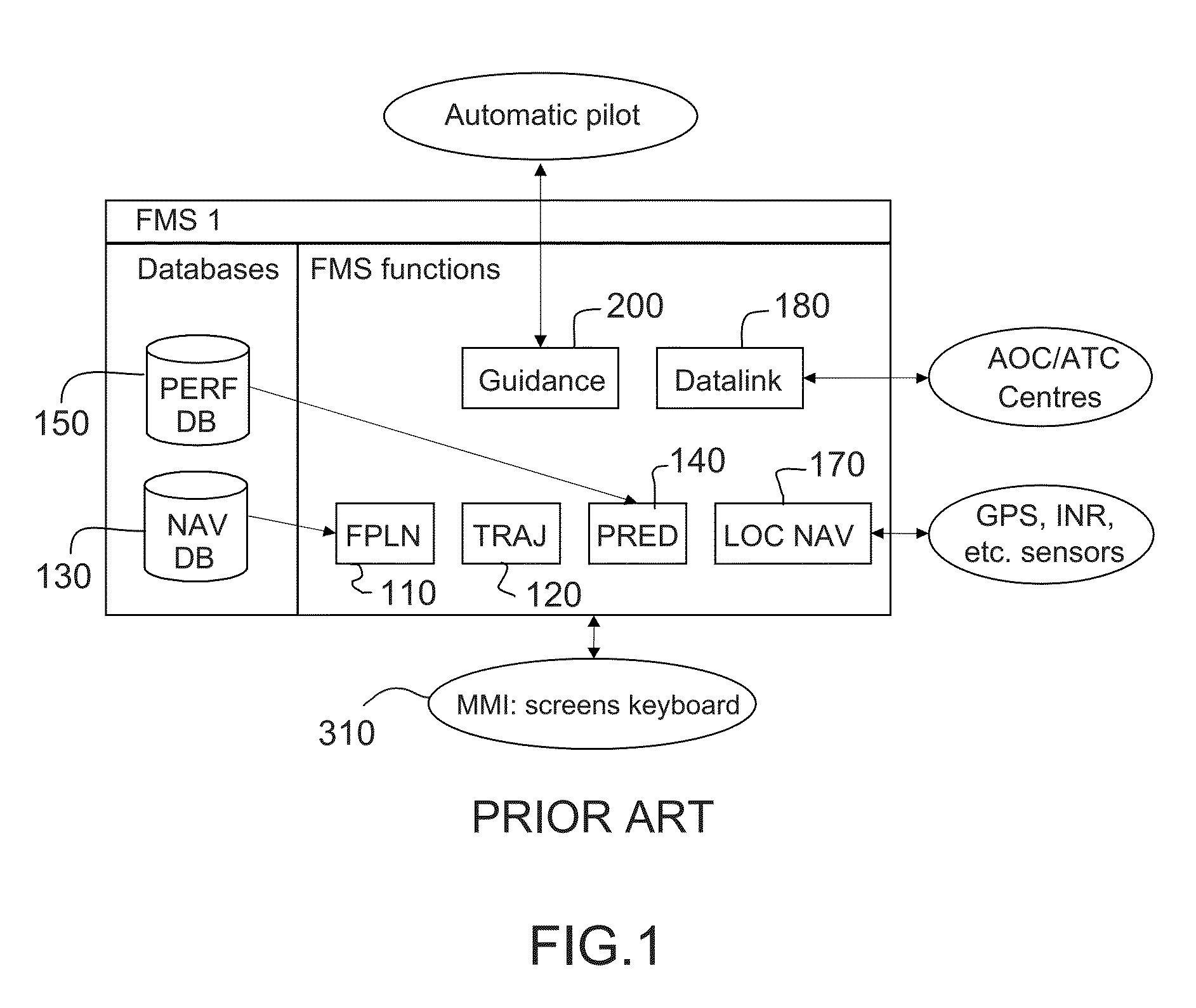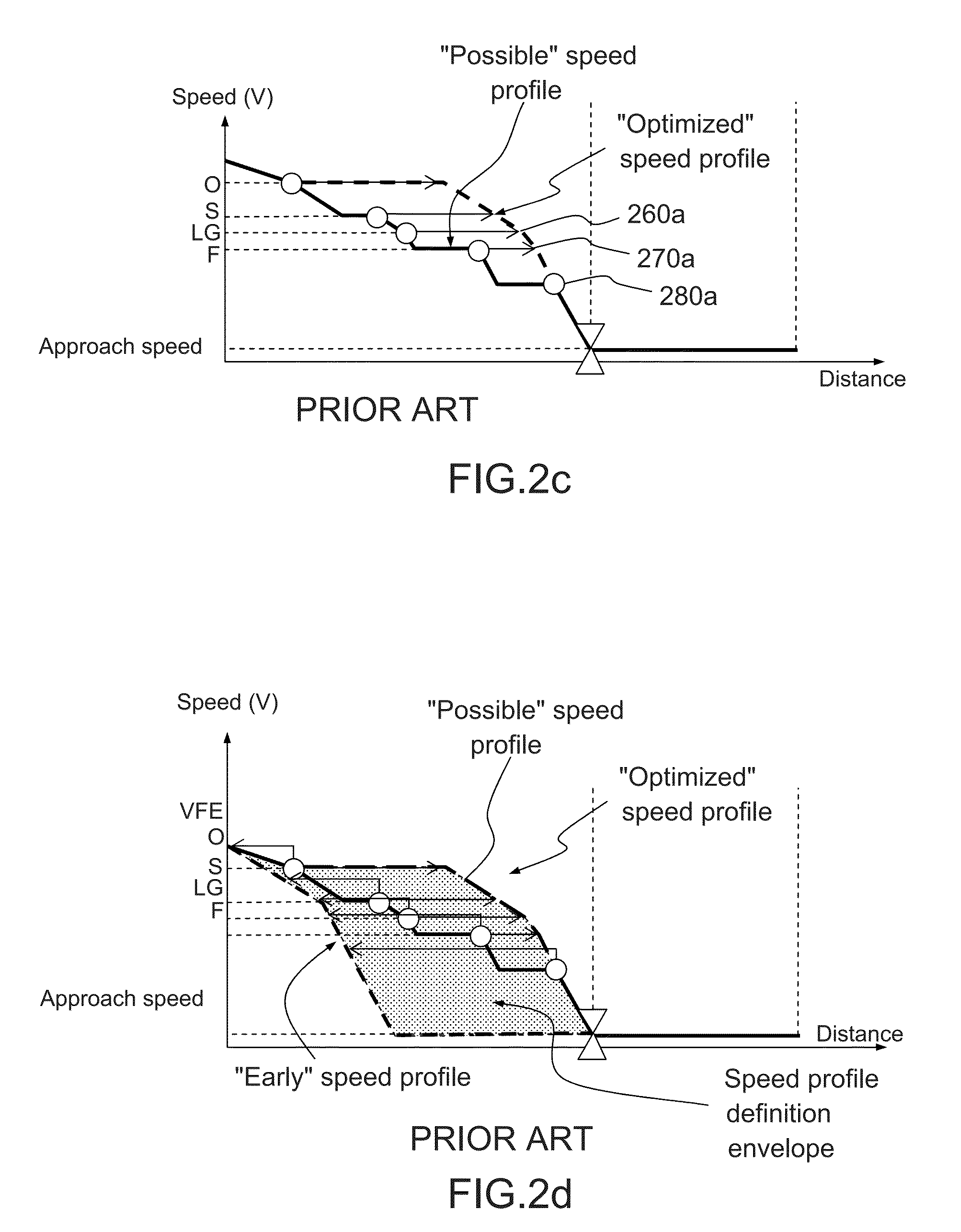Method of adapting a segment of an aircraft trajectory with constant ground gradient segment according to at least one performance criterion
a technology of constant ground gradient and segmental adaptation, which is applied in the direction of process and machine control, instruments, and navigation instruments, etc., can solve the problems of suboptimal vertical path produced by using these procedures, higher aircraft fuel consumption at low altitude, and noise generated by the engines and the flow of air around the aircraft (aerodynamic noise)
- Summary
- Abstract
- Description
- Claims
- Application Information
AI Technical Summary
Benefits of technology
Problems solved by technology
Method used
Image
Examples
Embodiment Construction
[0043]In the remainder of the description, the method according to the invention is illustrated by examples relating to the construction of vertical profiles for CDA approach procedures, even though it should be noted that the invention may be applied to any operation requiring vertical flight profiles with constant ground gradient, including procedures involving climbing with constant ground gradient.
[0044]FIG. 1 depicts a functional diagram of various capacities of a FMS 1 of an aircraft according to the prior art. A flight management system may be implemented by at least one computer carried on board the aircraft. The FMS 1 notably determines a geometry of a flight plan profile followed by the aircraft. The path is calculated in four dimensions: three dimensions of space and a time / speed profile dimension. The FMS 1 also, via a first pilot interface 310, transmits to a pilot, or to an automatic pilot, guidance instructions calculated by the FMS 1 for following the flight profile....
PUM
 Login to View More
Login to View More Abstract
Description
Claims
Application Information
 Login to View More
Login to View More - R&D
- Intellectual Property
- Life Sciences
- Materials
- Tech Scout
- Unparalleled Data Quality
- Higher Quality Content
- 60% Fewer Hallucinations
Browse by: Latest US Patents, China's latest patents, Technical Efficacy Thesaurus, Application Domain, Technology Topic, Popular Technical Reports.
© 2025 PatSnap. All rights reserved.Legal|Privacy policy|Modern Slavery Act Transparency Statement|Sitemap|About US| Contact US: help@patsnap.com



